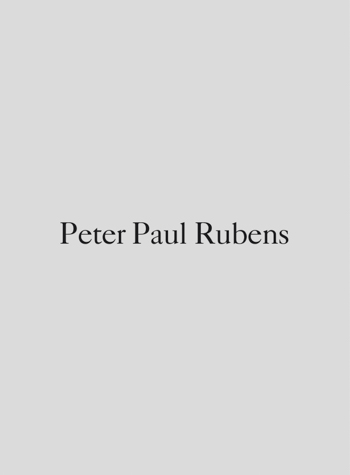Peter Paul Rubens
1577 - 1640
Rubens was born into a wealthy family in Siegen, Westphalia, in 1577. After the death of his father in 1587 he returned to Antwerp where his parents had previously lived before moving to Germany. He began his artistic training in the studio of Tobias Verhaecht and Adam van Noort, continuing his studies with Otto van Veen with whom he remained until he was twenty. In 1589 Rubens entered the guild of Saint Luke in Antwerp as an independent master. In 1600 Rubens is documented in Italy in the service of the Duke of Mantua. During this trip he visited Rome and other cities of North Italy,...
Rubens was born into a wealthy family in Siegen, Westphalia, in 1577. After the death of his father in 1587 he returned to Antwerp where his parents had previously lived before moving to Germany. He began his artistic training in the studio of Tobias Verhaecht and Adam van Noort, continuing his studies with Otto van Veen with whom he remained until he was twenty. In 1589 Rubens entered the guild of Saint Luke in Antwerp as an independent master. In 1600 Rubens is documented in Italy in the service of the Duke of Mantua. During this trip he visited Rome and other cities of North Italy, studying the works of the great 16thcentury Italian painters. In 1603 Rubens went to Spain on a mission for the Duke. On his return the following year he was appointed court painter to Vincenzo Gonzaga. In 1608 he settled in Antwerp and the following year entered the service of the Archduke and Archduchess Albert and Isabella. Among the works executed during the second decade of the century is the Self-Portrait with the Artist’s Wife Isabella Brandt (Alte Pinakothek, Munich) and the two triptychs of The Raising of the Cross and The Descent from the Cross (both Antwerp cathedral), two major works that further consolidated his fame. Dating from 1620 is one of Rubens’ masterpieces, The Lance, painted for the new Jesuit church in Antwerp. Two years later Marie de’Medici commissioned him to paint a series for the Palais du Luxembourg of episodes from her own life. In 1628 the artist was again in Spain on a diplomatic mission and the following year went to England, being received in both countries with great honours. In 1638 Rubens undertook the decoration of the Torre de la Parada for Philip IV, with scenes based on Ovid’s Metamorphoses. Also dating from this decade is The Garden of Love (Museo Nacional del Prado, Madrid) and The Saint Ildephonsus Triptych(Kunsthistorisches Museum, Vienna). During the last years of his career Rubens also focused on landscape painting. Throughout his life Rubens collaborated with a number of artists, including Jan Brueghel and Frans Snyders, while a large number of assistants and pupils passed through his highly active studio, most notably Van Dyck. His influence on the art of his day was enormous, both within Flanders and throughout Europe, due both to his personal celebrity and to the dissemination of his compositions through the engravings after them that he commissioned.

